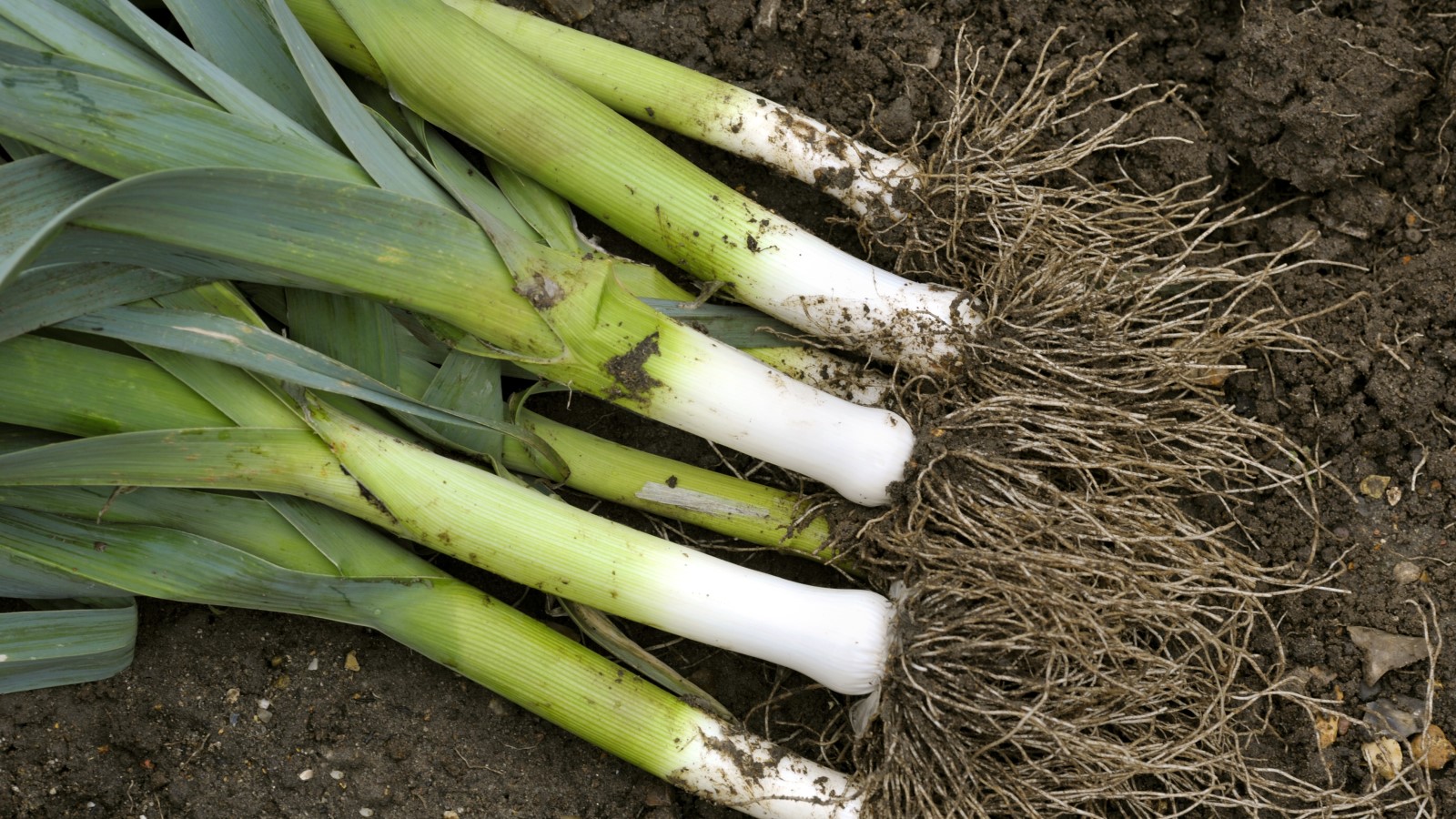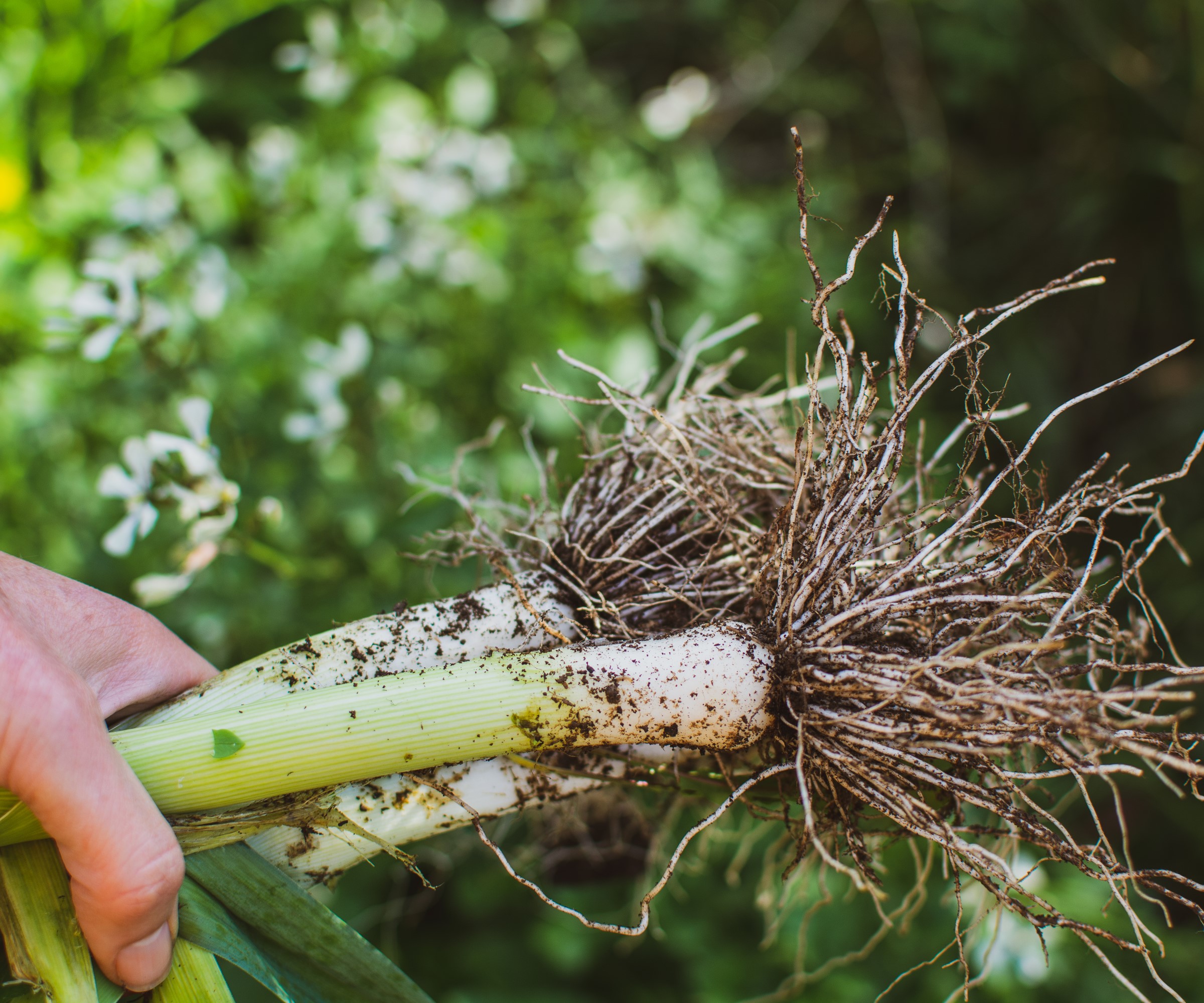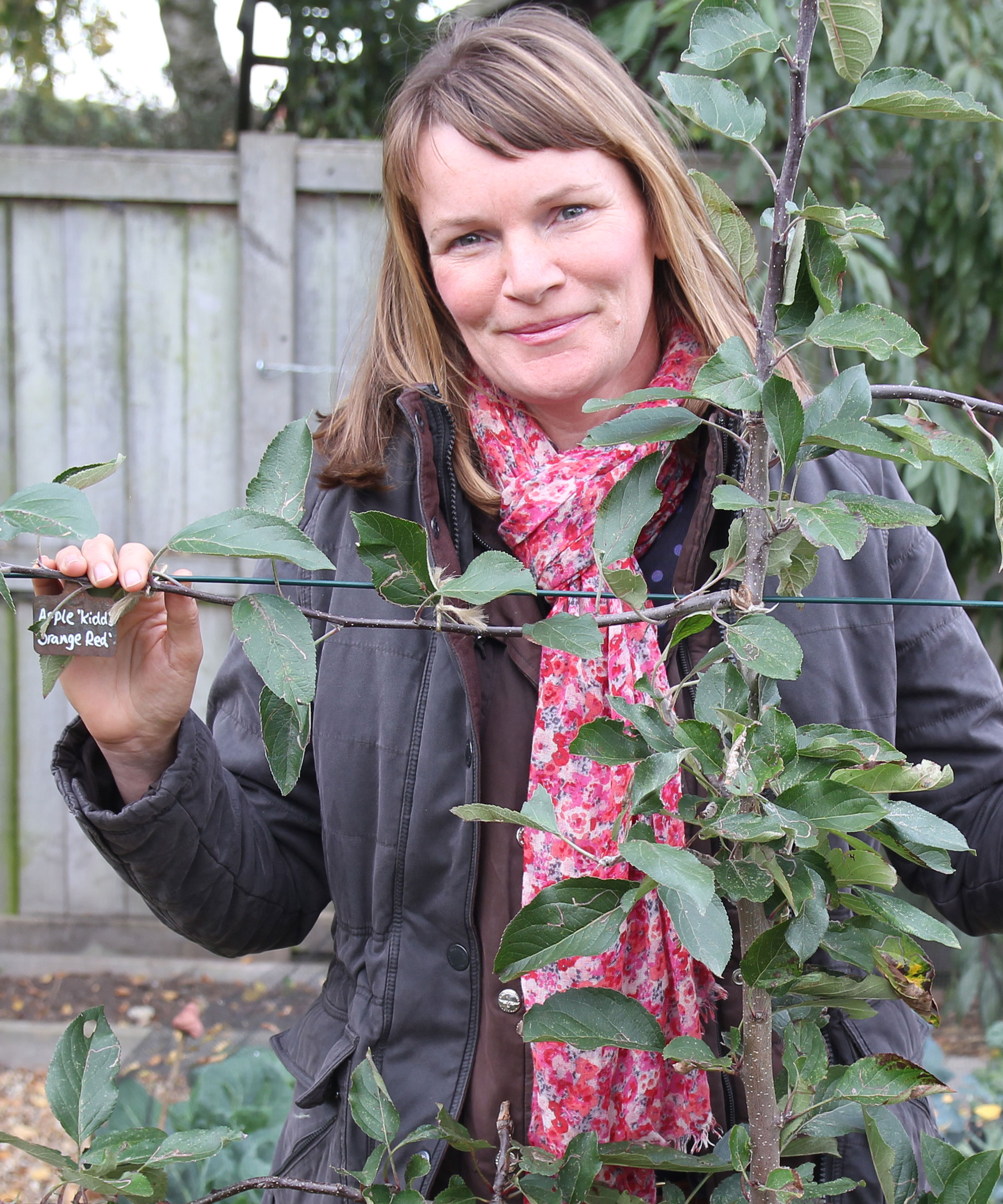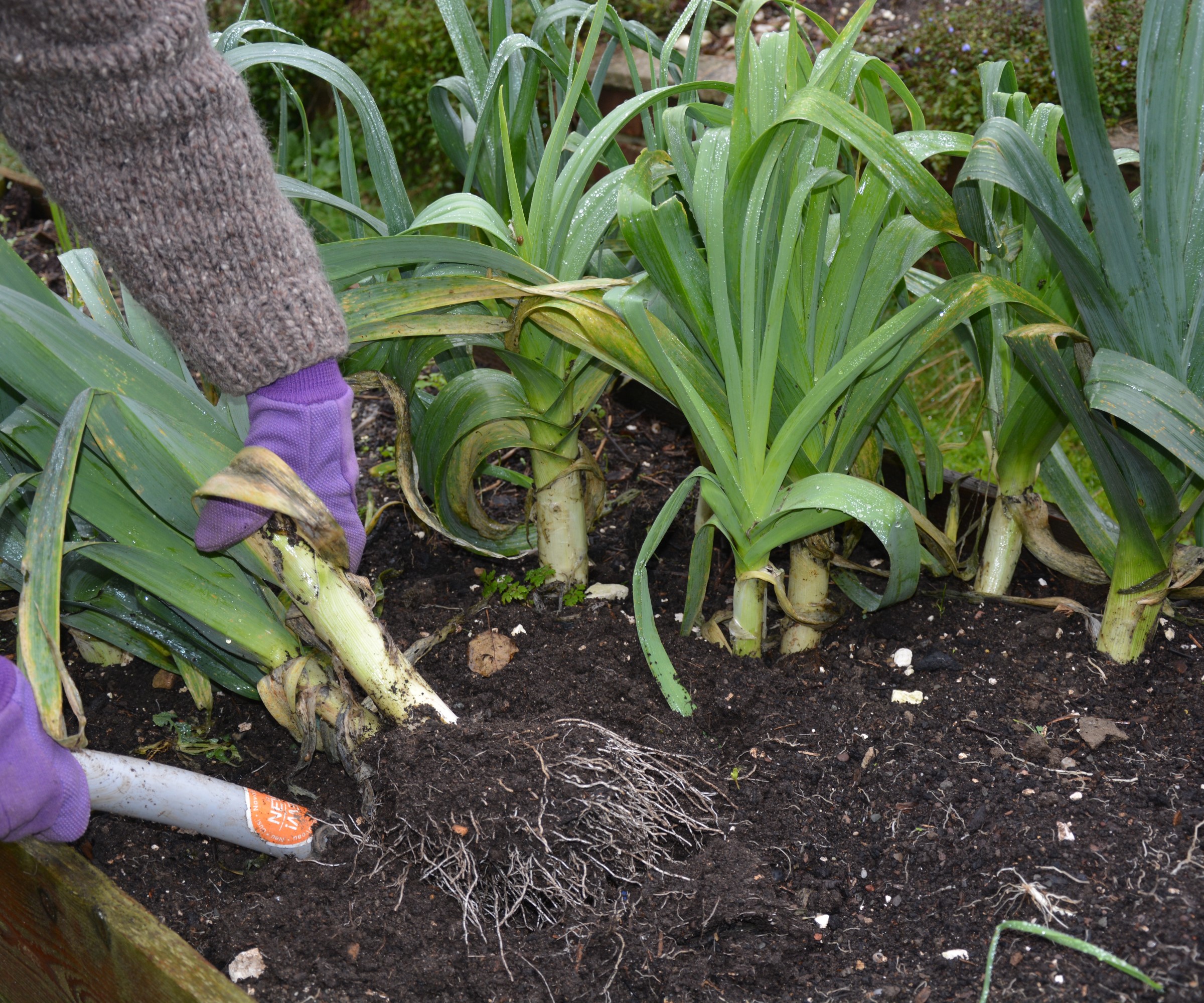When and how to harvest leeks – for a long crop of perfect stems
Discover when different types of leeks are ready to harvest, the best way to lift them carefully from the ground, and how to prepare them for storage


Leeks are a fantastic crop that is often seen as a vital winter vegetable but are actually capable of providing a harvest for up to eight months a year. With good planning, and growing different varieties, you can be lifting leeks from summer into the following spring.
Growing leeks is relatively easy and often starts with sowing seeds in mid-spring, before planting seedlings out into the garden come early summer. It is now also popular to grow baby leeks that are harvested when they are around the thickness of a pencil.
I have grown lots of leeks in kitchen gardens as they were always massively popular with chefs and also sold really well to the public – leeks were actually the favorite vegetable of a head chef at a Michelin-star restaurant I grew for. Ultimately, leeks are simple to harvest and the key point is to do it carefully to avoid damaging the stem.

Leeks can be harvested for a long period and are best enjoyed fresh from the garden
When to harvest leeks
Leeks come in many types and varieties that influence the timing of both their sowing and harvesting. They tend to be classified as early, mid, and late types that reflect when they mature and are ready to harvest from your vegetable garden.
Some people do grow baby leeks and they can be ready to crop in as little as 60 days. However, leeks are predominantly grown to be mature and harvested at full size. This can take up to four months to go from sowing the seed, through transplanting seedlings, all the way to harvesting time.
Early types of leeks are ready to harvest from late summer, mid types can be cropped into winter, while late leeks can be harvested into spring. Lucy Chamberlain, fruit and vegetable expert for Homes & Gardens, advises how careful planning of even small vegetable garden ideas can mean a really long leek harvest. You can see a range of leek seeds at Burpee.
She says: ‘With careful selection, you can harvest leeks from August until April. Early varieties tend to have long, slender stems or ‘shanks’ and can be harvested as baby veg in late summer.
Design expertise in your inbox – from inspiring decorating ideas and beautiful celebrity homes to practical gardening advice and shopping round-ups.
‘As you move towards winter, varieties become stockier and hardier with darker green leaves (called ‘flags’) and will yield well into the spring.'
The leeks should have a thick, white, cylindrical stalk around 18-36in (45-90cm) tall and be between one and two inches in diameter. The exact size will depend on the cultivar so always refer to the seed packet to make sure you pick your leeks at the right size. Leeks are best lifted as required as they taste best fresh from the ground.

Lucy was a Horticultural Advisor at RHS Wisley and has been Head Gardener on a 100-acre estate in England for many years, but writes regularly for titles such as The Garden, Gardeners’ World, The Guardian and Amateur Gardening. She’s also the author of RHS Step by Step Veg Patch, available from Amazon, which covers 50 types of fruit and veg.

Hardier types of leeks can stay in the ground all winter
How to harvest leeks
Start to lift leeks as required as soon as they reach a usable size. It is always better to use garden tools to lift the vegetable to avoid damaging the plant - a garden fork is the best tool for the job, such as this digging fork on Amazon. Pulling the leek by the stems with your hands can risk ripping the leek, especially if the ground is heavy or hard over winter.
Use a fork to get under the roots and gently lever the leek out of the ground, this makes sure the whole vegetable comes up without any of the stems being damaged. Harvesting too roughly is a common vegetable harvesting mistake and one to avoid if you don't want to damage your produce. It is recommended to place the fork into the ground a few inches from the stem to then gently loosen the leek and lift it from the ground.
If you want to harvest some smaller leeks and allow others to grow larger, then you can lift alternate leeks out of your kitchen garden. This allows the leeks remaining to develop and grow larger to occupy the space provided by removing others.
Once the leeks are harvested, remove as much soil from the stem and roots as possible and give the vegetables a good rinse to try to get out any grit and dirt between the leaves. Leaving some of the roots on the plant can help them stay fresher for longer

Leeks should be levered out of the ground with a fork to avoid damaging stems
How to store leeks after harvest
Give the leek a bit of a trim before storing them. Use a pair of clean and sharp pruning shears to trim the roots down, but do not remove them, as they help the leek continue to absorb moisture and not dry out. Also, you can remove some of the less-desirable outer leaves that won’t be looking as appetizing as the rest and trim off the top few inches of the leaves that don’t tend to be eaten.
The vegetable can last up to two weeks in a refrigerator, though it is best to wrap it in a plastic bag as leeks can give off an odor. An alternative is to partially bury the leeks in sand and store them in a cool and dark place at a temperature of around 32F, here they can be stored for a couple of months. Use the largest leeks first as smaller ones actually store for longer.
FAQs
Can leeks be left in the ground over winter?
If you do not have a dark cellar or a similar environment to store leeks, then keeping them in the ground is a great way of storing the leeks over the winter period. The hardier types of leeks, the mid and late varieties, are able to be kept in the ground over winter and into spring to be lifted and used as required.
Can leeks be left in the ground too long?
Earlier types of leeks are not as hardy and need to be used first, they will not be able to withstand being in the ground all over winter. If you leave leeks in the ground for too long they eventually flower and the flesh of the stem becomes very tough and not ideal for eating.
Leeks are suitable for growing as part of vegetable garden container ideas and want to grow in a sunny site with free-draining soil that has been enhanced with compost or well-rotted manure. They are a crop that can also be used as part of companion planting, as the odor emitted by leeks can repel many garden pests, for example, they are great for kale companion planting.

Drew has worked as a writer since 2008 and was also a professional gardener for many years. As a trained horticulturist, he worked in prestigious historic gardens, including Hanbury Hall and the world-famous Hidcote Manor Garden. He also spent time as a specialist kitchen gardener at Soho Farmhouse and Netherby Hall, where he grew vegetables, fruit, herbs, and cut flowers for restaurants. Drew has written for numerous print and online publications and is an allotment holder and garden blogger. He is shortlisted for the Digital Gardening Writer of the Year at the 2025 Garden Media Guild Awards.